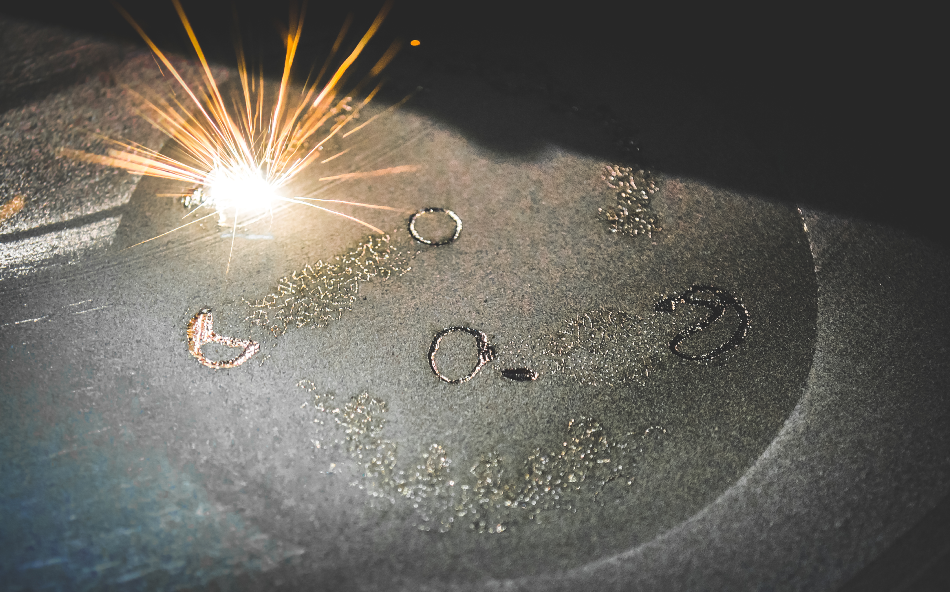
Image Credit: MarinaGrigorivna/Shutterstock.com
Material sciences researchers are often looking for ways to improve the strength and viability of materials for a wide range of industries, including the construction industry. The need for processes that efficiently address these issues is of ongoing concern in this area of scientific research.
Powder Metallurgy – An Overview
Powder metallurgy (PM) is a term for a set of techniques that make materials and components from metal powders. Using PM processes, the need for metal removal processes is vastly reduced or avoided. The effect of this is that yield losses in manufacturing are dramatically reduced, resulting in lower overall costs in the manufacturing process. Powder metallurgy produces a porous product that can be permeated by a liquid or gas. The process is used in the manufacture of different types of material, and there are many different techniques that fall under the umbrella of PM.
There are three basic steps in a typical PM process: Powder blending (pulverization), die compaction, and sintering.
Sintering Explained
Sintering is one part of the powder metallurgy process. Whereas compaction is generally performed at room temperature under high pressure, sintering is performed by heating the material produced in a carefully controlled atmospheric composition. The properties of pores created in the process can be controlled to create a desirable product.
The process works by lowering the surface energy of the material. The surface area is reduced through the formation of interparticle bonds, which grow by atomic-level mechanisms. Commonly, the temperature used in the sintering process is below the melting point of the main component in the powder. There are three types of sintering. These are:
- Solid-state sintering of crystalline materials (SSS)
- Viscous sintering (solid-state sintering of amorphous materials)
- Liquid phase sintering of crystalline materials (LPS)
There are several stages, even within the sintering process, itself one of the main stages of the overall powder metallurgy process. The mechanisms involved here are condensation, evaporation, volume diffusion, plastic deformation, and grain boundaries. Generally speaking, there are three overlapping stages – initial, intermediate, and final. These stages are classified like this:
- Initial stage – bonding between adjacent particles. Formation and growth of necks but limited densification.
- Intermediate stage – Considerable densification of the powder compact. The solid and porous phase of the material is connected in this stage.
- Final stage – The solid phase is connected, and pores are isolated. The desired microstructure evolution is controlled by the interaction between pores and grain boundaries.
Within most sintering furnaces, there are three zones that help carry out these six steps: The burn-off/purge stage, the high-temperature stage, the cooling period. All three are designed to control the properties of the final sintered product in a precise way to create a desirable product. For example, if the temperature is raised too quickly, pores may form, which have a very high internal pressure, which can lead to expansion or fracturing.
The sintering process can determine the optimal structure and properties of the desired finished product. These include the material’s strength, electric and thermal conductivity, ductility, and toughness. Controlling the sintering process is, therefore, key to the entire powder metallurgy process.
Why the Process is Increasing in its Importance
Sintering has a long history. It has been practiced for thousands of years in the production of pottery and ceramics. The first research on the sintering of ceramic materials was published just over a hundred years ago in 1918 in the first volume of the Journal of the American Ceramic Society.
Sintering is a process that is increasing in its importance. As of 2017, there are more than 108,000 publications about sintering-related processes. The value of the sintering industry is estimated at close toward $30 billion globally. Sintering is integral to the fabrication of many materials, such as nanopowder-based materials and high surface area structures.
As new applications are found for these materials in the ever-changing technology sector, understanding their microstructures and the ways sintering can be controlled to produce desirable results is key to improving the end material produced by powder metallurgy processes. Some recent technological advances that make use of novel materials include fuel and solar cell components, metal-based bioimplants, materials for use in extreme environments, thermoelectric materials, and many others.
As these materials make new demands on material scientists to ensure that they are at their peak effectiveness, the process of their manufacture and the unique properties they need to function properly must be fully understood. In recent years, unconventional techniques have emerged to meet these demands, including pressure-assisted sintering, electric field/current-assisted sintering, two-step sintering, and microwave sintering.
Understanding how the process functions in these new techniques are of fundamental concern if they are to be effective additions to the field of material science as it evolves and moves into the new century to provide solutions to some of the most cutting-edge fields of scientific research around today.
References and Further Reading
Bordia, Rajendra K. et al. (2017) Current understanding and future research directions at the onset of the next century of sintering science and technology Journal of the American Ceramic Society Vol. 100 Issue 6
https://ceramics.onlinelibrary.wiley.com/doi/10.1111/jace.14919
Sintering in the Powder Metallurgy Process – Powder Metallurgy Review
https://www.pm-review.com/introduction-to-powder-metallurgy/sintering-in-the-powder-metallurgy-process/
Sintering – Brittanica.com
https://www.britannica.com/technology/sintering
Randall M. German (2014) Sintering: From Empirical Observations to Scientific Principles – ScienceDirect (book)
https://www.sciencedirect.com/book/9780124016828/sintering-from-empirical-observations-to-scientific-principles#book-description
Disclaimer: The views expressed here are those of the author expressed in their private capacity and do not necessarily represent the views of AZoM.com Limited T/A AZoNetwork the owner and operator of this website. This disclaimer forms part of the Terms and conditions of use of this website.